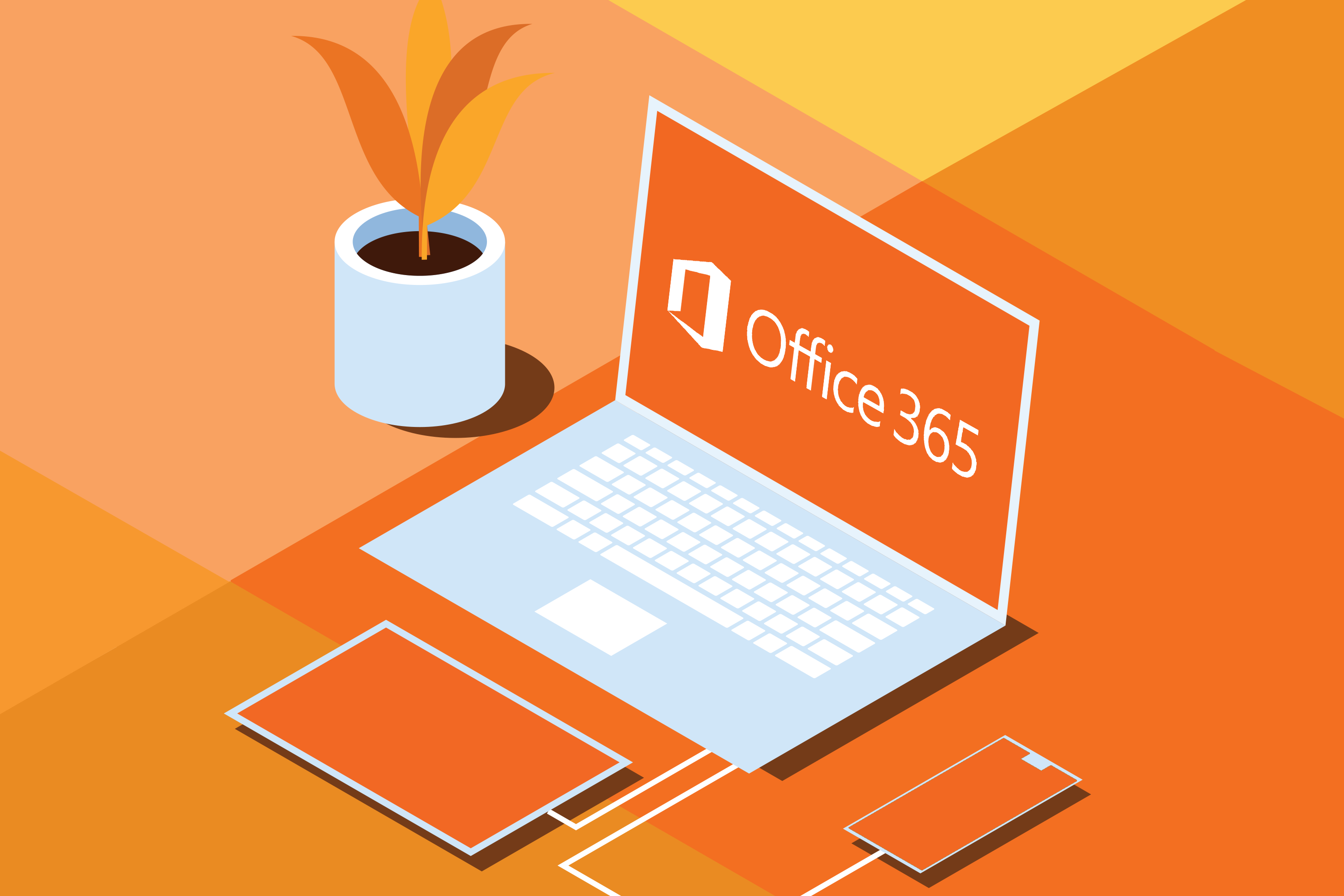Working from home is a big change in an already tumultuous time. But there is a bright side. The day and age of stay-at-home and self-quarantine presents an opportunity to transform the way you and your employees work and, even more importantly, how you do business.
Many businesses use and rely on Microsoft 365. For a lot of those who use it, it's Microsoft's way of getting people to pay for their Word and Excel apps monthly or yearly. But most subscriptions actually offer much, much more. Today we'll take a high-level overview of some of the ways you can utilize your existing M365 subscription to help you and your employees work from home.

Meet face to face with Teams
The first, and probably most important, component is Microsoft Teams. Teams allows your entire organization to collaborate and communicate with each other and with your clients and partners. Boasting strong audio and video meeting capabilities along with chat and screen sharing, Teams allows you to connect just as if you were at the office, while in the comfort of home.
Teams utilizes it's namesake Teams and Channels to help you organize your employees and what they're doing. Channels can be set up by department, subject/topic or any other way you want. You can also invite clients and other people outside your organization to join in on a discussion or view information.
Teams also can be used for webinars or live events as a useful alternative to things like Zoom or Gotomeeting and allowing you to reach thousands of people in your audience.
Communication is the backbone of any healthy business or organization. And while physical face-to-face communication isn't always possible, Teams helps bridge the gap.
Access and collaborate with OneDrive and Sharepoint
When everyone is working from home, accessing files on the company server becomes.. difficult. VPNs are slow and inefficient and uploading/downloading to and from a website even more so. Enter OneDrive and Sharepoint.
OneDrive is your employees personal cloud storage. Files can be synced between all their devices and securely sharing files with others is a snap. Each user gets a whopping 1TB of space so there's more than enough for all their projects. And in the odd-event it's not, additional storage can be added.
SharePoint is similar to OneDrive but represents the entire organization. Instead of each user having their own individual storage account, SharePoint allows selected users to access document libraries. This most closely represents the classic "Company Server" setup where files are stored centrally and people are given address through administration.
Both OneDrive and SharePoint offer real-time collaboration on Office documents (Word docs, Excel files, etc). What this means is two or more people can be working on the same document (say, a spreadsheet) and changes one user makes will be shown in real time to the others. This combined with meetings in teams creates a very powerful way to keep your business humming without everyone actually being in the same building.
Keep work flowing with Planner
Keeping everyone on-task can be tricky even in a physical environment. Microsoft Planner is a relatively unknown app in the O365 family that can help you keep tabs on the progress of projects and the employees working on them.
Using Planner, you can create projects and assign groups of tasks to those projects. You can then assign individual or groups of employees to individual tasks as well as set due dates and priority. Employees can complete checklists and add comments to a task as well as set the current progress of the task. Use Planner to help keep everyone on the same page and moving forward.
Freeform collaboration with OneNote and Whiteboard
Whiteboard is exactly what it sounds like. A digital whiteboard that can be shared across the internet with your employees. Whiteboard's beauty is in it's simplicity and versatility. It can be used in your browser, during a Teams meeting, or via the app downloaded from the Windows Store. Use Whiteboard during meetings to plan out ideas or make quick illustrations similar to a real white board in a conference room.
OneNote is another often overlooked application with tremendous power. For those that do use it, it's often relegated to a personal notebook for keeping track of things. OneNote notebooks can however, be shared across your organization and multiple people can work on the same notebook at once. This makes it a great tool for brainstorming and keeping project notes and ideas centralized.
Put it all in the cloud with Azure
Up to this point we've discussed remote working solutions that are a part of the Microsoft 365 family. There is however an additional option for organizations that rely on line-of-business apps that have no cloud alternative.
Utilizing Microsoft Azure, your entire IT infrastructure can be placed in the cloud. And with the power of Windows Virtual Desktop, any app you can dream of can be made cloud-ready and function in a remote workforce accessible not just from any place, but any device including tablets and smartphones. This type of setup allows you to be rid of bulky on-premise servers and equipment and provides flexible scalability.
While this option may be slightly overkill for small mom & pops, it can be a game changer for companies and organizations which employ dozens of people.
Getting to the cloud
Migrating to the cloud usually isn't as simple as pressing a button. If you'd like to know more or need help with getting your business into the cloud, let us know and we'd be happy to have a conversation with you.